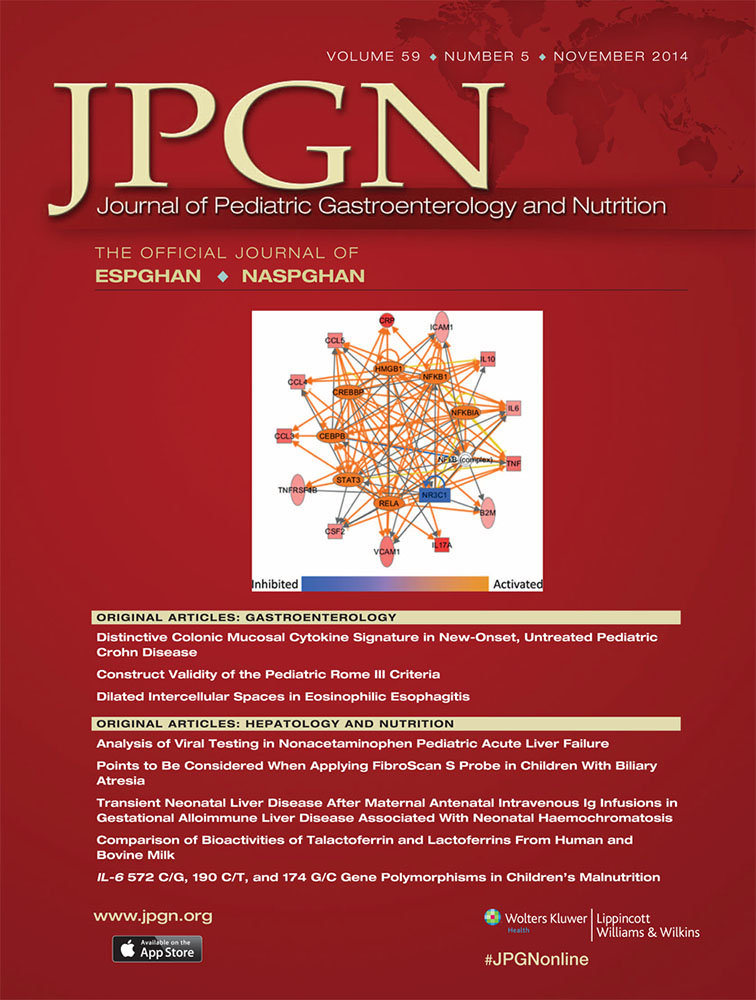High Rate of Clinical and Endoscopic Relapse After Healing of Erosive Peptic Esophagitis in Children and Adolescents
This article has been developed as a Journal CME Activity by NASPGHAN. Visit: http://www.naspghan.org/wmspage.cfm?parm1=742 to view instructions, documentation, and the complete necessary steps to receive CME credit for reading this article.
The authors report no conflicts of interest.
ABSTRACT
Objectives:
The aim of the present study was to estimate the rate of clinical and endoscopic relapse after initial treatment of erosive peptic esophagitis in children and adolescents.
Methods:
A total of 24 patients (2.1–16.4 years old, mean ± standard deviation [SD] 9.9 ± 3.1; male:female 3) with healed endoscopic erosive esophagitis and without gastroesophageal reflux disease (GERD)–predisposing conditions were followed up for 4 to 32.9 months (mean 20.8 ± 10.6 years). Structured clinical evaluation was performed every other week during the initial treatment and maintenance, and every 3 months after that. Whenever a clinical relapse happened, a new endoscopic evaluation was performed. Severity and frequency were scored on 10-point and 6-point semiquantitative scales, respectively.
Results:
At baseline, epigastric pain was the most reported symptom (70.8%), with intensity scored as >5 in 88.3% of patients, and median frequency of 3 (weekly; daily in 5, 20.8%). Clinical relapse was detected in 20 of 24 (83.3%) patients after a median period of 14.65 months (95% confidence interval [CI] 6.7–25.7 months). Endoscopic relapse was observed in 9 of 20 (45%) patients after a median of 25.7 months. The dose of lansoprazole needed to heal the esophagitis was not significantly associated with the risk for clinical relapse (hazard ratio [HR] 1.74, 0.94, 7.72, P = 0.06), whereas the body mass index (BMI) was directly associated with endoscopic relapse (HR 1.3, 1, 1.69, P = 0.05).
Conclusions:
Children with healed erosive esophagitis have up to 83% clinical relapse and of the 83%, 45% had endoscopic relapse. Correlation of endoscopic relapse with clinical symptom is poor. Higher grades of esophagitis and higher BMI are risk factors for endoscopic relapse.




